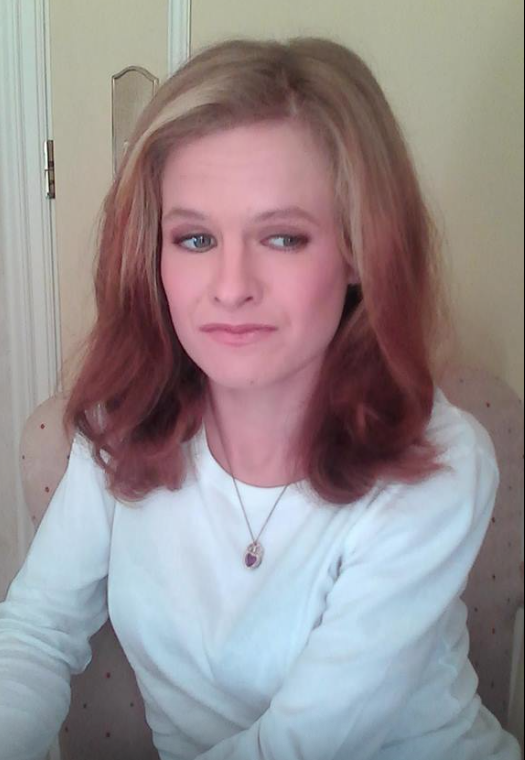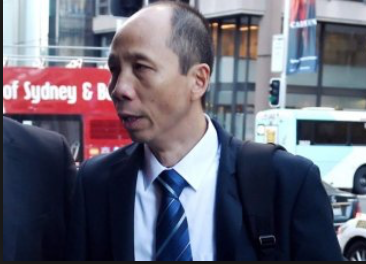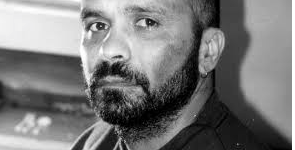Andrew L. Urban.
It will be a momentous Thursday (March 21, 2019), in Sue Neill-Fraser’s quest seeking leave to appeal her 2010 murder conviction. Via a sworn affidavit, Meaghan Vass is expected to admit that she witnessed the murder – Neill-Fraser wasn’t there. But this is just one of the troubling cases that litter the landscape of legal mistakes in Australia.
Justice Brett is due shortly to announce his decision whether to grant Neill-Fraser leave, which would lead to a full appeal in front of three judges.
NOW
SUE NEILL-FRASER – TAS
Based on a much-criticised, tunnel-vision investigation, the murder trial continued the flow of errors. The prosecution speculated without supporting evidence how Neill-Fraser might have killed Bob Chappell on their yacht, Four Winds, on the night of Australia Day 2009. The DNA evidence at the crime scene was dismissed as ‘a red herring’. In some half dozen hearings over the past three years, Neill-Fraser’s lawyers have – in effect – had to try and prove her innocence with fresh and compelling evidence. (In the wake of new legislation.)
Two key points that can be categorised as fresh and compelling which show why a new appeal is warranted can be summarised as follows:

Meaghan Vass (fb 2019)
1 Meaghan Vass now admitting she witnessed the murder and Neill-Fraser was not involved. Her testimony is supported by her DNA evidence. (Yes, it could well have been adduced at trial – but it was the prosecution who objected to Vass being recalled for further questioning and the judge ruled against the recall. What will Justice Brett make of that devilish detail?)
2 The eye witness testimony that the silhouette of ‘a female figure’ in a dinghy seen heading in the direction of the Four Winds between 11.30 – midnight on Australia Day has been negated by new evidence that it was in fact a slightly built male with long hair in the dinghy. (The fact that the female figure was not identified as Neill-Fraser just highlights the poverty of the prosecution’s case. The testimony neatly fit the prosecution’s speculative scenario; there was nothing else to show that Neill-Fraser had returned to the yacht after her lunch with Bob Chappell’s sister at the yacht club.)
There is much more that is wrong with the carriage of this case, as any full and proper appeal court would no doubt make known.
UNDER SCRUTINY:
ROBERT XIE – NSW

Robert Xie
Robert Xie was convicted of the brutal murder of 5 members of the Lin family at Epping, Sydney, July 18, 2009, including Min Lin and Terry Lin. Autopsy details on their bladder and stomach contents were not revealed to the jury. The autopsies suggest the murders took place before 2am, when Xie was still at his home computer (not contested). And the motive ascribed to him is risible to the Chinese. My upcoming book, No Crime, Much Punishment (Wilkinson Publishing) offers a terrifying alternative … The DNA evidence is also dud. An appeal hearing is scheduled for late 2019.
CARDINAL GEORGE PELL – VIC
The jury in December 2018 convicted Pell of the 1996 sexual abuse of two 13 year old boys in the (publicly accessible) sacristy of St Patrick’s Cathedral in East Melbourne, solely on the uncorroborated allegation by one of the two, now an adult, after the death of the other, who had denied the alleged abuse. No evidence was produced and several witnesses denied the testimony’s logistical plausibility. An appeal is scheduled for June 2019.
ROBERT FARQUHARSON – VIC
Investigation fatally flawed, led to conviction. Upcoming book, Road to Damnation by Chris Brook (Wilkinson Publishing) scientifically examines and discredits evidence presented.
IN PROGRESS & IN DOUBT
ANON – SA
Domestic conflict elements, accused murderer disabled after incident, claims innocence – trial to be held later this year.
PREVIOUS CASES
GORDON WOOD – NSW
Appeal successful, conviction overturned. Judge critical of prosecution on several grounds, including failure to establish Wood was at the Gap at the relevant time and speculating about Wood throwing over the cliff spear throw with a run-up … how did he avoid falling off himself? Wood’s malicious prosecution claim denied by Justice Fullerton in a decision that nonetheless points out the prosecutor was ‘impermissibly straining for a conviction”. Appeal on the way to the High Court.
DAVID SZACH – SA
His boyfriend’s body was found in the freezer – forensic evidence from Dr Colin Manock re time of death was crucial – and wrong; he was released after 14 years but still cannot clear his name. Attempt ongoing.
DEREK BROMLEY – SA
 Bromley insists on his innocence, refuses to admit & show remorse so he is not paroled. He is still in jail after 34 years, purely on eyewitness evidence by a man suffering acute schizophrenia, including visions. His appeals have all failed, the latest one controversially – the appeal court has, in effect, abolished the right to a jury trial, and at the same time abolished the right of a wrongfully convicted person to an effective appeal and to a retrial. A High Court appeal is pending.
Bromley insists on his innocence, refuses to admit & show remorse so he is not paroled. He is still in jail after 34 years, purely on eyewitness evidence by a man suffering acute schizophrenia, including visions. His appeals have all failed, the latest one controversially – the appeal court has, in effect, abolished the right to a jury trial, and at the same time abolished the right of a wrongfully convicted person to an effective appeal and to a retrial. A High Court appeal is pending.

The number of wrongful and doubtful convictions seems staggering! I’m now more doubtful when I hear about trials and convictions on the news – are they correct, or do they just suit a likely story sold to us all to accept?
So much for ‘beyond reasonable doubt’, I think it should now be beyond any and all doubt(s).
Modern science is now showing much about human behaviour and thinking (psychology) that brings in to question the ability of humans to objectively process information. In short, when in doubt we make things up and convince ourselves we’re right (the confirmation bias). Denialism is a clear demonstration of this.
The system is now so compromised that it needs major overhaul from very strong leadership, sadly beyond our current parliaments who lack such qualities. No wonder trust in general is at all time lows, and falling!
Another “under scrutiny” case that I only became aware of because of this website is Kathleen Folbigg. Again, I’m only just getting briefed on the case but a quick google search reveals:
1) Sleep apnea kills 38,000 people very year and it can be genetically inherited.
2) Genetic predisposition to adverse reactions in vaccines now has a specific study dedicated to it called “adversomics”.
3) A new study into carbon dioxide and a specific inner ear anomaly is currently underway as one possible cause for SIDS and could well be an inherited predisposition.
Interesting facts that one can glean from a quick Google search to prevent public hysteria from negatively impacting court trials, hey!?!
A very recent article:
“Keli Lane trial judge calls for investigation into withheld police recordings”
7.30 Exclusive by Caro Meldrum-Hanna and Jaya Balendra
“Thousands of covert recordings of Keli Lane captured by NSW Police during its decade-long investigation into the convicted baby killer were never disclosed in her 2010 murder trial.”
“Based on internal police documents and figures obtained by Exposed, approximately 94 per cent of the total number of police recordings were withheld.”
https://www.abc.net.au/news/2019-03-19/keli-lane-trial-judge-calls-for-investigation-police-recordings/10912430.
__________________
As in the case of Sue Neill-Fraser, the jury of Keli Lane’s case were given an imagined scenario of how Keli Lane disposed of her baby daughter – a scenario that had no basis in fact and was supported by no evidence. The prosecutor doing this was the same man who prosecuted Gordon Wood and made use of the spurious “spear throw” theory to describe how Wood had thrown Carolyn Byrne to her death.
Tim
There are aspects of John Hughes’ evidence at trial which have puzzled me for some years now.
John Hughes gave evidence of seeing a figure in a dinghy some 50 metres or so beyond the rowing club sheds towards midnight 26Jan2009. The dinghy was “a rubber inflatable” and the person in the dinghy “ℎ𝑎𝑑 𝑡ℎ𝑒 𝑜𝑢𝑡𝑙𝑖𝑛𝑒 𝑜𝑓 𝑎 𝑤𝑜𝑚𝑎𝑛.” When asked ‘did he hear anything that was associated with the dinghy’, he said that “𝑇ℎ𝑒𝑟𝑒 𝑤𝑎𝑠 𝑎𝑛 𝑜𝑢𝑡𝑏𝑜𝑎𝑟𝑑 𝑜𝑛 𝑡ℎ𝑒 𝑏𝑎𝑐𝑘”.
I note that Mr Hughes did not say that he saw the outboard motor, but rather, seems to have answered that he heard an outboard motor which he associated with the dinghy. I’ve wondered for years whether in fact what he heard was the sound of John Brettingham-Moore’s vessel seeking to anchor outside the marina, and towards which we know that Grant Maddock sculled/rowed to Brettingham-Moore’s vessel late that night, to offer assistance to it.
John Hughes also said in cross-examination that the dinghy “𝑚𝑎𝑦 ℎ𝑎𝑣𝑒 𝑝𝑎𝑠𝑠𝑒𝑑 𝑏𝑒𝑡𝑤𝑒𝑒𝑛 𝑎 𝑓𝑒𝑤 𝑦𝑎𝑐ℎ𝑡𝑠”, and when asked if there any cars other than his own parked in the area of the rowing sheds, he replied “𝑡ℎ𝑒𝑟𝑒 𝑤𝑒𝑟𝑒𝑛’𝑡 𝑎𝑛𝑦 𝑜𝑡ℎ𝑒𝑟 𝑐𝑎𝑟𝑠 𝑝𝑎𝑟𝑘𝑒𝑑 𝑡ℎ𝑒𝑟𝑒. ”
It does not seem possible for this to be correct, for there is evidence that Stephen Gleeson (the homeless man) was in/at his car by the rowing club sheds, having returned to it at about 10:00 p.m. From what I’ve been able to work out, by visiting the site from time to time (the sheds are now somewhat altered: the alcove between the buildings on that spit of ‘reclaimed land’ where he kept his car, slept in it and lit up his stove near it, is no longer there,) Stephen Gleeson’s evidence in court – contrary to what he’d previously told the police of being drunk, sleeping all night in the car and knowing nothing – was that having got back from his sortie to the Food Van and to a couple of pubs in between, he’d ‘gone to bed’ (in the car) and was almost/asleep when there was a knock on the car (door?): two youngsters were there, with food, wanting him to heat it up, instead he cooked/heated up the remainder of some sausages that he had. The question that I’m examining here, is not whether Gleeson slept all night or whether he did have two youthful visitors late at night…
The question to be answered is how it was that John Hughes said that there weren’t any other cars parked there in the vicinity of the rowing sheds. To take a car out to the end of the rowing sheds’ spit, one must pass between the sheds and the water on the left. It seems clear to me that Stephen Gleeson’s car was there that night. It was unchallenged in court that Gleeson’s car was there, where the ‘homeless people’ (Gleeson et al.) would sometimes congregate. It was unchallenged in court that he was woken and asked to move his vehicle early the next morning, when the fire brigade attended consequent to the discovery of the sinking Four Winds. It went unchallenged in court that police had spoken to Mr Gleeson at his car, on the 27Jan2019. One witness was challenged: Susan Neill-Fraser, who had told of seeing some sort of fire (cooker/oven) there when she went down after that disturbing phone call phone call which ended at around 10:30p.m., that Australia Day night.
I’ve been wondering as to the reliability of Mr Hughes’ evidence: how could he not have seen Stephen Gleeson’s yellow car?
At the time of the trial, the jury had little cause to doubt the accuracy of John Hughes’ evidence, as Stephen Gleeson was not called to give evidence, and at trial, Susan Neill-Fraser’s evidence was treated as lies and red herrings: a ‘web of deceit’ … wasn’t that what Mr Ellis called it? I’m not questioning the sincerity of Mr Hughes’ account. However, I am wondering as to its completeness, to its accuracy and likewise, to its reliability.
Andrew, again I thank you for your having once more posted on your blog: this time a selection of ‘MoJ’ items. Unfortunately I do not have the time to respond to all the cases that you raise, but, knowing something of the Susan Neill-Fraser case, I felt this matter of John Hughes seeing an inflatable, motorised dinghy heading out from the RYCT needed some thought. That he told the court that it was bearing a person who on that moonless, cloudy and unlit night seemed to have…
– at a distance out on the water of 50 metres or ‘perhaps a little more’ –
…to have instilled in John Hughes’ memory, “… 𝑡ℎ𝑒 𝑓𝑒𝑒𝑙𝑖𝑛𝑔 𝑡ℎ𝑎𝑡 𝑡ℎ𝑖𝑠 𝑝𝑒𝑟𝑠𝑜𝑛 𝑤𝑎𝑠 𝑎 𝑓𝑒𝑚𝑎𝑙𝑒. 𝐼 𝑐𝑎𝑛’𝑡 𝑏𝑒 𝑑𝑒𝑓𝑖𝑛𝑖𝑡𝑒, 𝑖𝑡 𝑤𝑎𝑠 𝑑𝑎𝑟𝑘”.
Gee, who paid for the Meaghan Vass Make-Over?
The private investigator Colin did say that many years ago the police build a case on a BRICK that means the first person they suspect is guilty to them and that is what TasPol have done.
One key point that I had not seen or heard was Sue Neill-Fraser had lunch with Bob Chappell”s sister at the yacht club.
The Sue Neill-Fraser case was not tunnel vision.
Nor was there a flow of errors.
The problem will never be solved as long as people do not understand what is happening.
The police all to frequently nominate/determine the suspect before the research begins. It is then a matter of building the case around the suspect.
It is standard police modus operandi. It has to stop.
It is a capital mistake to theorise before one has data. Insensibly one begins to twist facts to suit theories instead of theories to suit facts. Sir Arthur Conan Doyle.